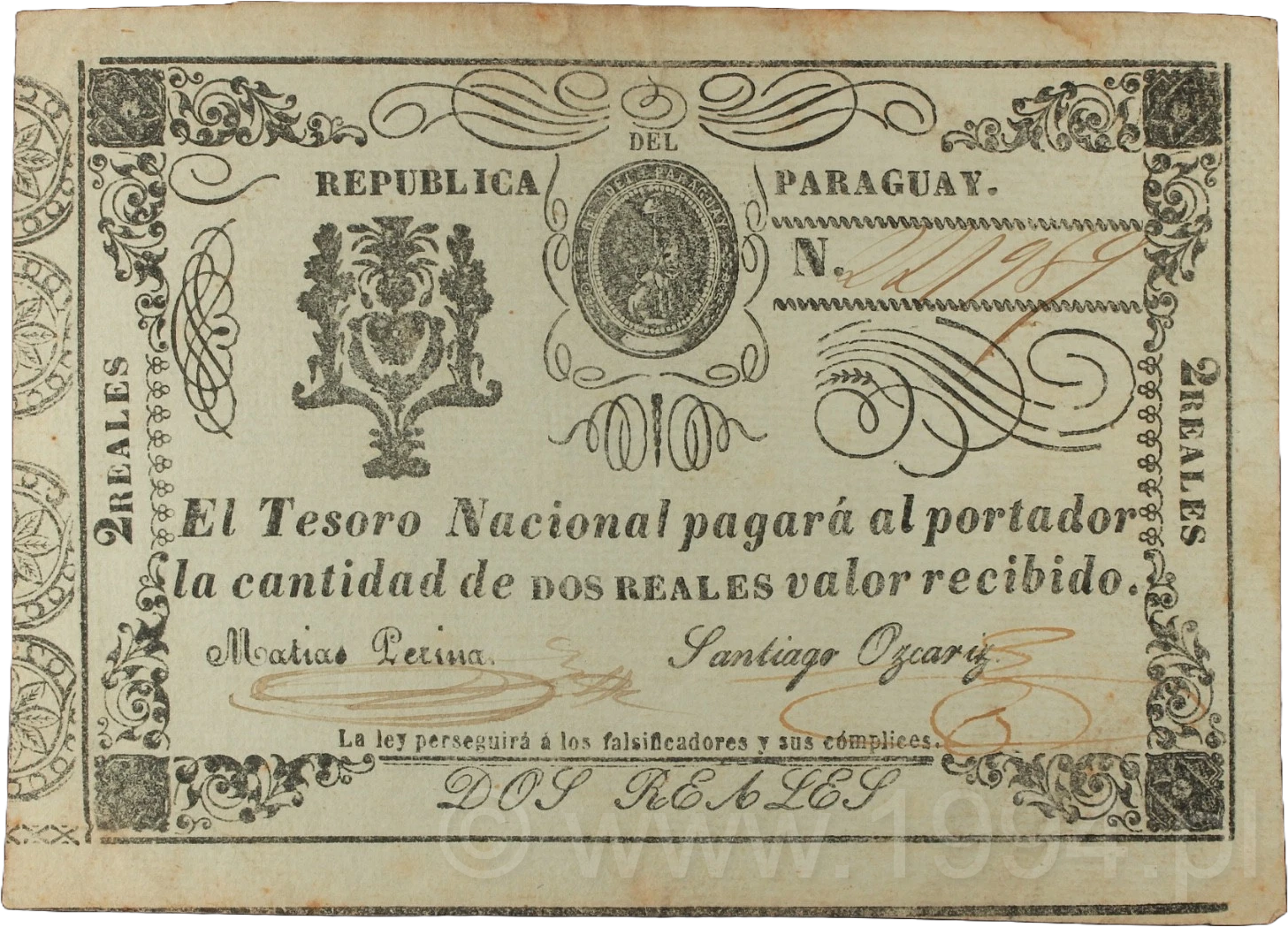Description and research notes
Earliest known national paper money of Paraguay — the 2 Reales Tesoro Nacional note issued circa 1856 under President Carlos Antonio Lopez. Printed locally in Asuncion on thin handmade paper, this inaugural issue predates all Pick-listed Paraguayan notes and represents the first attempt by the Treasury to create circulating paper currency.
Design elements include the national seal with the lion and liberty cap, ornate borders, and large denomination numerals at both sides. Hand-signed by Matias Reina and Santiago Ozcariz, officials active only in the mid-1850s, confirming its placement in the earliest emission. The reverse is blank, consistent with verified originals printed in Asuncion prior to imported paper use in the 1860s.
A diagnostic feature of this earliest plate is the tighter spacing in the line 'al portador' and the larger, freer handwritten signatures and serials — characteristics absent from later re-strikes of 1862–1865 (Pick 19 / MC27). The later wartime issues show wider word spacing, darker impressions, and slightly smaller handwriting, reflecting improved lithographic tools and re-lithographed stones rather than the original local plate.
Historical context: These Tesoro Nacional notes were issued in minimal numbers to offset coin shortages and were largely redeemed or destroyed during the War of the Triple Alliance (1864–1870). Survivors are exceedingly rare, and few retain full signatures and borders.
Catalog and rarity: Unlisted in the Standard Catalog of World Paper Money (Pick); tentatively correlated with MP #MC14 (ND 1856) in specialized Latin-American references. Not present in the PMG census. Genuine 1856 Reina–Ozcariz examples rank R6 (extremely rare) within early South American fiscal paper, preceding the 1862–65 wartime reprints commonly (and incorrectly) cited in online catalogs such as Numista.
